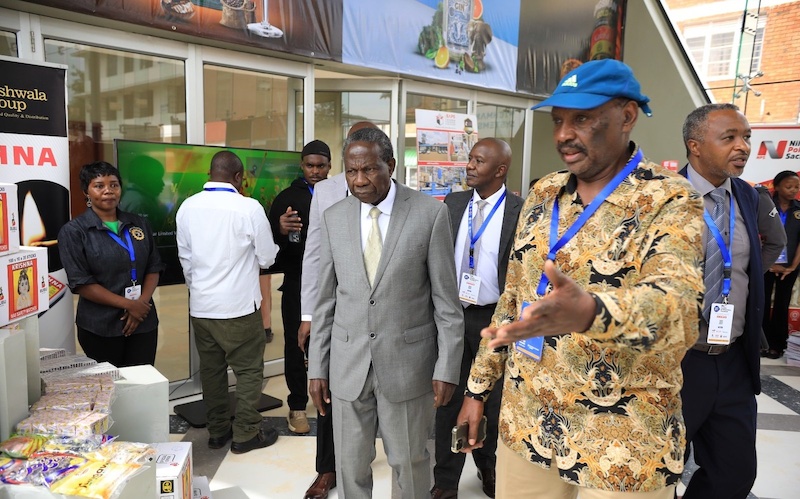
With more than 150,000 exhibitors from 30 different countries, the 2025 Uganda Manufacturers Association (UMA) international trade fair stands out as the biggest in the 31 years of exhibitions.
Having started on October 2 and running up to October 12, more than 150,000 showgoers are expected to attend this annual event. Yesterday, Finance minister Matia Kasaija officially opened the fair with a call for the empowerment of start-up innovations to boost the entrepreneurial skills of local manufacturers and innovators.
Kasaija’s message was just a script from UMA strategy for this year’s exhibition because gone are the days when showgoers were treated to factory-made items as attractions.
This time round, the trade fair is being marketed as the ideal showcase for small and medium enterprises (SMEs), segmented into eight different zones depending on one’s preferences right from handicrafts, beverages, autos to agricultural products, farming innovations and entrepreneurial skilling.
There is hardly any moment of idleness at the fair, where the rain has done little to dampen the spirits of showgoers. I have noted literally three to four things that are new from previous fairs. First of all is the digitization, a seamless process of entering the trade fair without the long queues.
As a result, it has reduced the risk associated with the possibility of getting money lost at the entrance. According to Dr Ezra Muhumuza Rubanda, the UMA executive director, their innovation to have showgoers buy tickets online has been a gamechanger to make entrance through buying tickets online.
Indeed, the long, chaotic queues have been made a thing of the past because UMA has made it convenient for showgoers to buy tickets from the comfort of their homes through the Momo ticketing platform to improve convenience for the showgoers.
During my walk around the fair, the most telling aspect is the growth of SMEs, especially in the areas of construction, transport and manufacturing. What struck me most were entrepreneurial innovations aimed at protecting the environment while creating job opportunities for the underprivileged, such as a group of young ladies that convert banana fibres into handicrafts.
It cannot get any better than this. I also noted that compared to the previous trade fairs which were more about people doing business, this time round, people are pouring into the trade fair to learn.
What’s more, UMA brought in the made-in-Uganda supermarket as one of the initiatives to promote the Buy Uganda Build Uganda (Bubu) policy. “It goes without saying that in many supermarkets, many local products are sidelined at the expense of imported goods,” says Rubanda.
“This is because there is a wrong mentality that what is made in Uganda is not preferred by the consumers. But we as UMA, we have set out to showcase the made-in-Uganda products and exhibit them exclusively for showgoers so that they learn how they look like and can be able to distinguish them from those that are dumped here.”
Indeed, one telling aspect about the many stalls is that product inventors and innovators are always present and on hand to explain everything to the showgoers. That direct interaction raises confidence in the products and in return offers the producer immediate feedback. Rubanda adds that this new model intends to create a situation where a customer is nearer to the producer.
“We are narrowing down so that consumers know that so-and-so is the manufacturer of the product. Through this fair, when a customer realises that they have the number of the product maker, it eases business transactions. That direct link between the producer and the consumer is what is making the made-in-Uganda supermarket special,” he says.
With four more days to go before the fair ends on October 12, UMA sounds contended about the turnout, and, most importantly, the bridged gap between the product producer and consumer.



